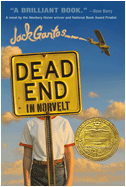 The American Library Association's Youth Media Awards, announced each January, are a high point on the book community's calendar. For this month's post, TeachingBooks.net contacted and recorded conversations with the award winners, asking them to share their inspirations and influences.
The American Library Association's Youth Media Awards, announced each January, are a high point on the book community's calendar. For this month's post, TeachingBooks.net contacted and recorded conversations with the award winners, asking them to share their inspirations and influences.
Listen to the 2012 American Library Association Award Winners
 The American Library Association's Youth Media Awards, announced each January, are a high point on the book community's calendar. For this month's post, TeachingBooks.net contacted and recorded conversations with the award winners, asking them to share their inspirations and influences.
The American Library Association's Youth Media Awards, announced each January, are a high point on the book community's calendar. For this month's post, TeachingBooks.net contacted and recorded conversations with the award winners, asking them to share their inspirations and influences.

 During 15-plus years of researching nonfiction for young readers I’ve learned that every project includes at least one pinch-me-is-this-really-happening moment. Such was the case as I researched the Memphis sanitation workers’ strike of 1968 for Marching to the Mountaintop: How Poverty, Labor Fights, and Civil Rights Set the Stage for Martin Luther King, Jr’s Final Hours (National Geographic, 2012).
During 15-plus years of researching nonfiction for young readers I’ve learned that every project includes at least one pinch-me-is-this-really-happening moment. Such was the case as I researched the Memphis sanitation workers’ strike of 1968 for Marching to the Mountaintop: How Poverty, Labor Fights, and Civil Rights Set the Stage for Martin Luther King, Jr’s Final Hours (National Geographic, 2012). With No Name-Calling Week occurring January 23-27, 2012, this is a perfect time of year to integrate multimedia resources into your anti-bullying curriculum.
With No Name-Calling Week occurring January 23-27, 2012, this is a perfect time of year to integrate multimedia resources into your anti-bullying curriculum.